Happy New Year! Or as the Hmong say, Nyob zoo Xyoo Tshiab!
Every year, during this lull between Christmas and New Year’s Day, thousands of Hmong families gather at the Fresno Fairgrounds in the Central Valley to celebrate their community’s most important holiday. Traditionally, it’s a time to rest after the harvest and to celebrate a new beginning. The Hmong New Year Festival lasts for a whole week. The American version now includes a Miss Hmong beauty contest, live pop music, and a meat-eater’s delight…Hmong BBQ.
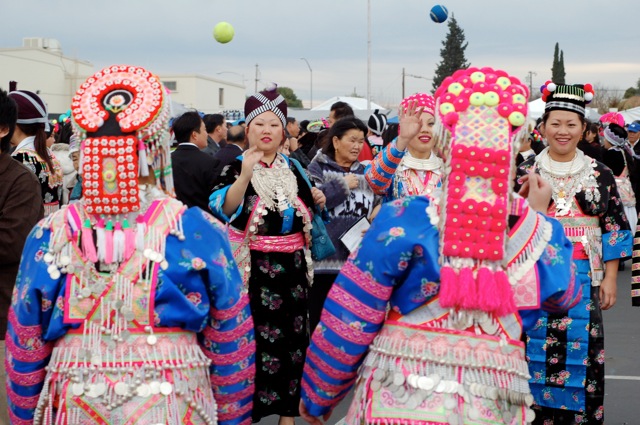
At the center of the Fairgrounds, lines of boys and girls in festive clothing toss balls back and forth playfully. In another time, the game pov pob was a way for young men and women in the highland villages to check each other out before getting married. The boys now tend to cluster at the edges and watch (a cultural shift adopted from high school dances perhaps?) while a few brave couples walk the fairgrounds hand-in-hand.
After taking in all the color and sparkle, you can move on to our main attraction…the food.
Follow the massive cloud of heavenly smoke to the food alley, where scores of grills line the thoroughfare on both sides.
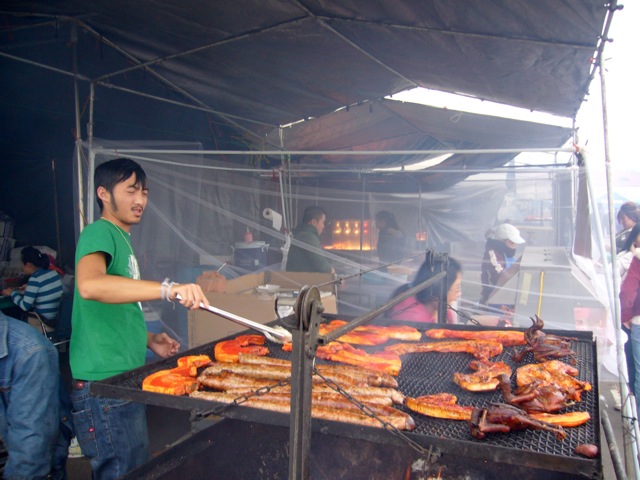
The smallest grills were the size of beds.
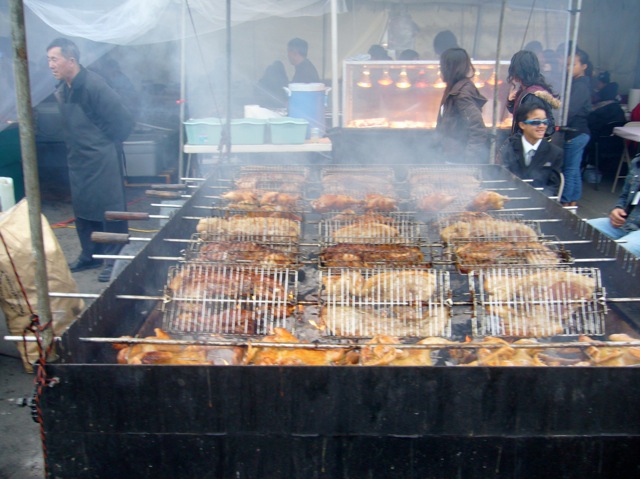
Like a huge smoky, savory foosball game, this grill sported eight mega-skewers of sausage, pork and chicken that turned automatically with the help of a generator-powered crank and chain.
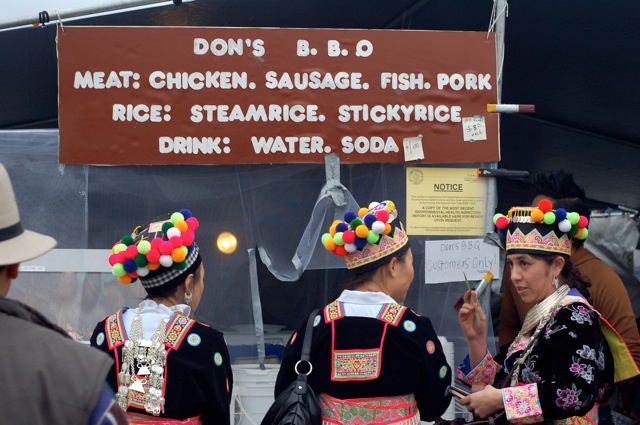
Waiting in line for favorite dishes.
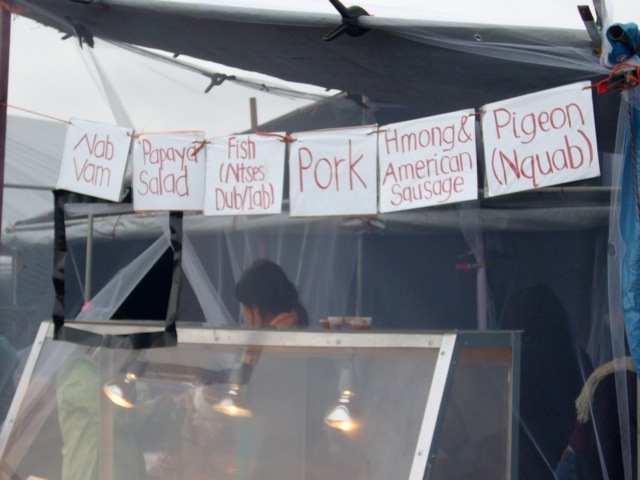
Hand-lettered signs rule.
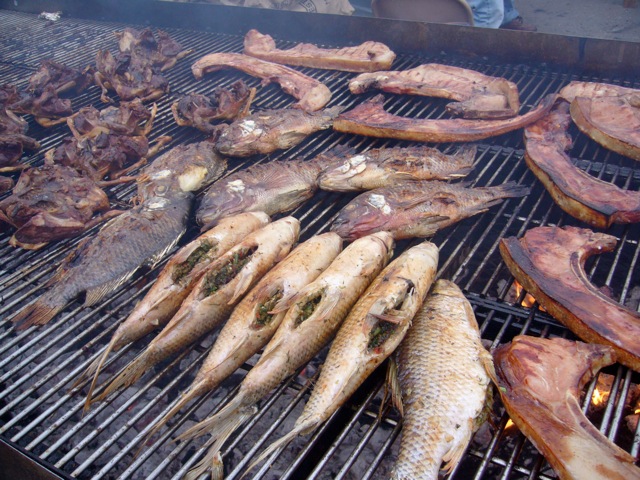
From the air, we have pigeons pressed flat for quick cooking, while from the water, there’s fish stuffed with a generous amount of lemongrass and chiles. From the land, long cuts of pork rubbed with turmeric are the favorite meat.
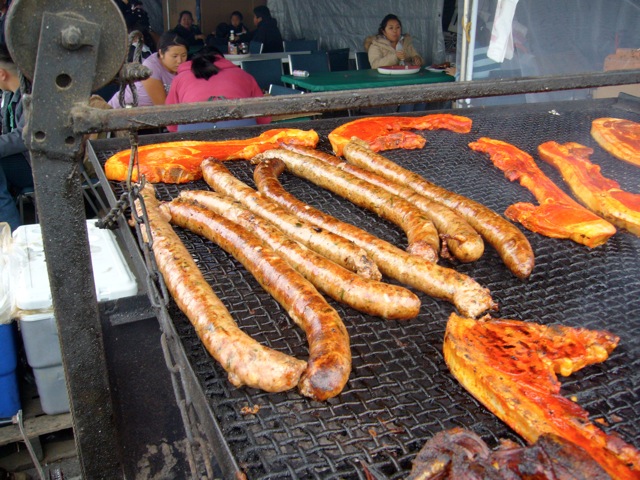
But the best of all are the fatty, juicy, herbalicious sausages!
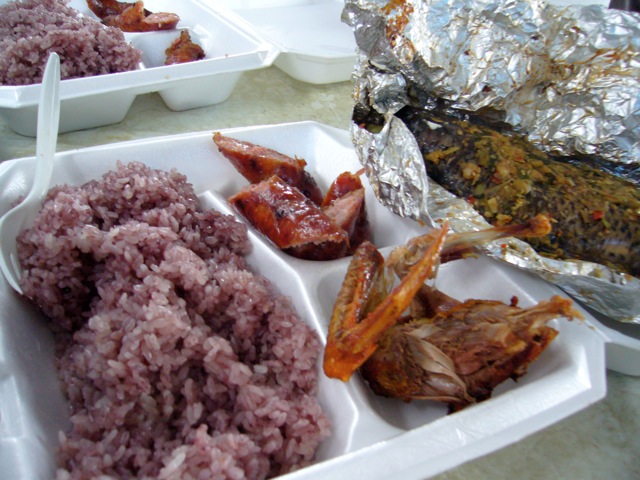
Lunch from The Master Grill, conveniently located at the food lane’s cul-de-sac, includes red sticky rice, thick slices of sausage, half of a pigeon and an entire fish.
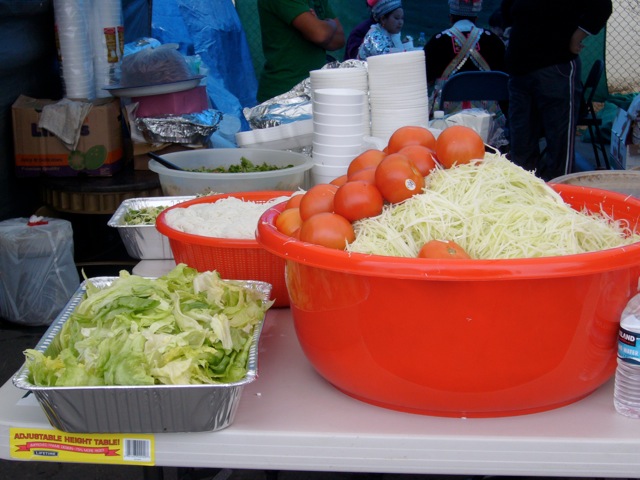
Ingredients for immensely popular papaya salad await each customer’s order.
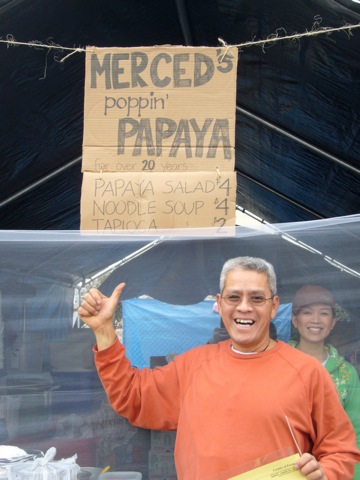
Stop at this family’s booth for the absolute best Hmong-style papaya salad in California.
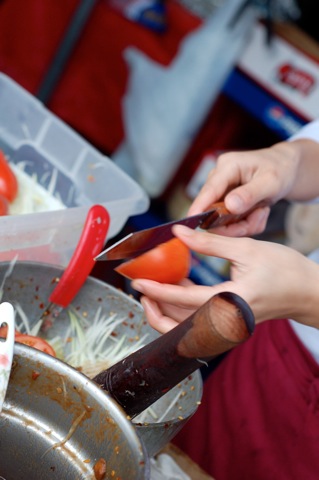
Oldest daughter Sandra adds papaya shreds and a few slices of tomato…
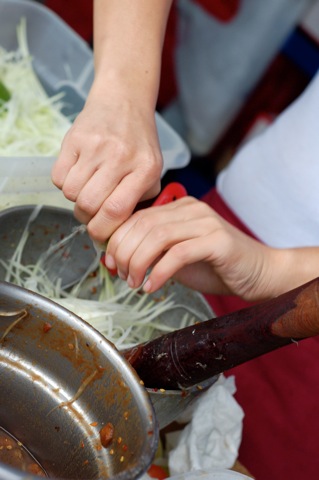
…squeezes in lots of fresh lime juice…
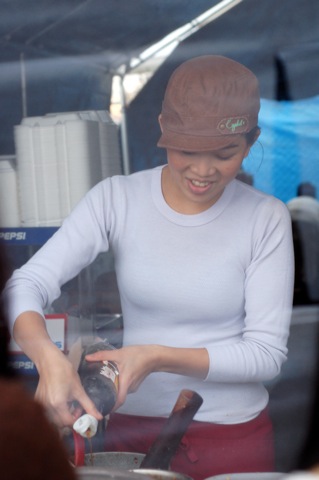
…then pours on the fish sauce. For the hardcore, shrimp paste added on request!
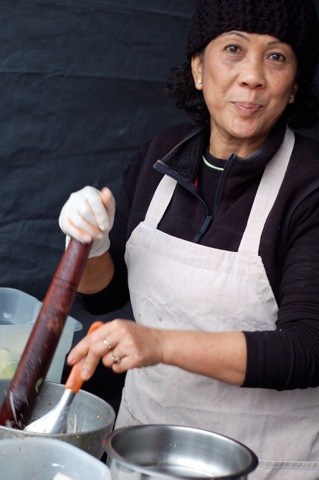
Mom prepares another batch for a second line of hungry customers.
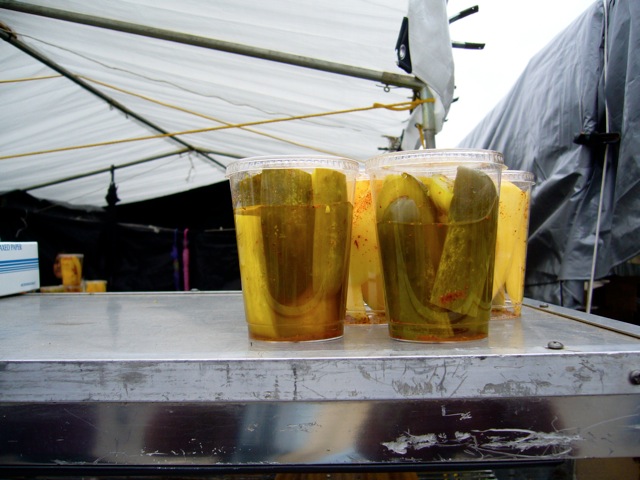
Pickles seasoned with chile peppers appear at nearly every food vendors’ booth. Behind these, you can see mangoes with spicy salt, but the tropical fruit were not nearly as popular as their distant dill-pickle cousins.
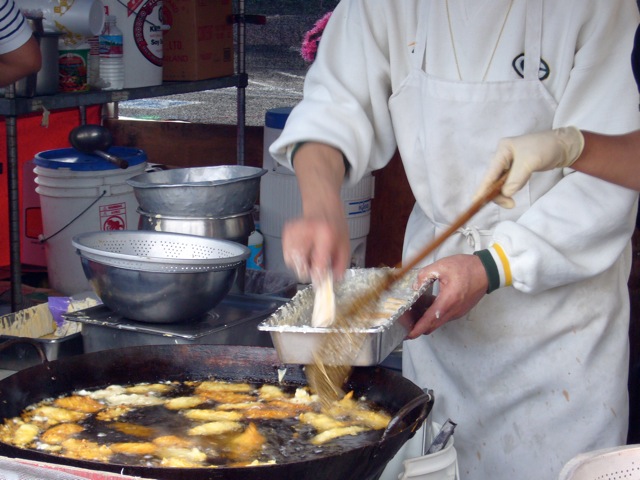
A stroll to the other side of the Fairgrounds leads to a long line for dessert: thick wedges of bananas that fry up crisp and sweet.
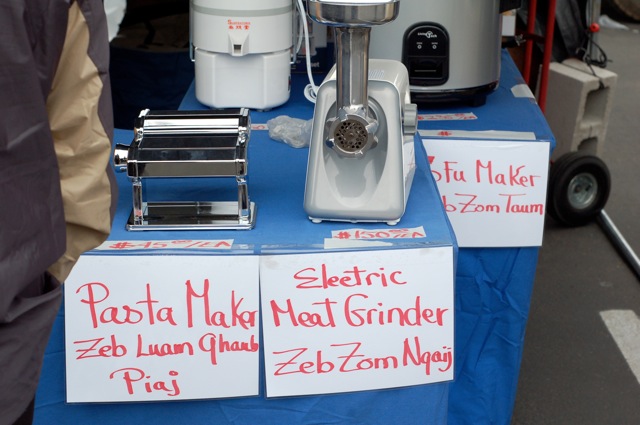
Modern gadgets for classic dishes.
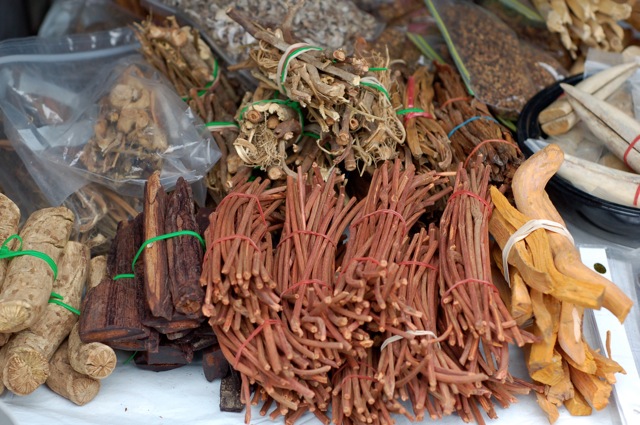
Just a small sampling of the hundreds of dried roots, stems, buds, shoots, seeds, and flowers that are on display at the medicinal booths. Customers point to scratchy throats and sore backs; vendors share healing recipes and compare favorable effects.
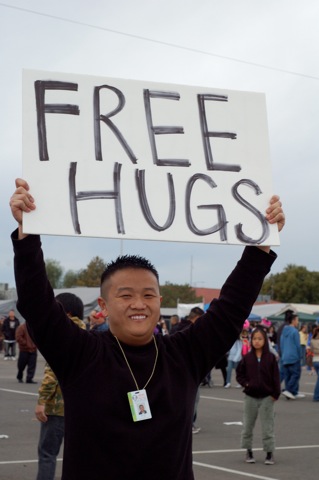
Community love at the heart of the Fairgrounds.
The festivities will continue through January 1, 2007. For more information about Hmong New Year in Fresno, visit: http://www.hmongnewyear.us/ Click on “Agenda” for a complete listing of events over the 7 days of the festival.
To learn more about Hmong food and culture, check out these books and websites:
Fish and Fish Dishes of Laos, by Alan Davidson (Prospect Books, 2003) Land-locked Laos fortunately has the Mekong River to bring its people an abundance of fresh-water fish. Though it emphasizes the cooking of the low-land peoples, this cookbook also offers an introduction to the food of other communities in the country.
Hmong American Community, Inc. For the over 1200 Hmong families farming in the Central Valley, a special USDA grant helps support research and development of organic vegetables for the San Francisco and Los Angeles markets. If you purchase wholesale, this site is a useful source of crop and price information. If you don’t, you can still read up on what Hmong farmers are bringing to market.
The Spirit Catches You and You Fall Down, by Anne Fadiman (Farrar, Straus and Giroux, 1998) Now required reading in many medical and social service programs, this book tells the story of a Hmong family in Merced, California, and the doctors who struggled to understand and help them. Fadiman includes in her book detailed descriptions of daily life and festive celebrations, an excellent example of journalistic skills applied with an anthropological eye.
Hmong Arts, Books and Crafts From history books to music CDs, embroidered story cloths to herbal remedies, this website includes a wide range of Hmong products.
Hmong Language Written language is a relatively new development for the Hmong people, who relied on a rich oral tradition of storytelling for millennia. Learn about important cultural and religious words and listen to their pronunciation in the “Hmong Means Being Free” program.